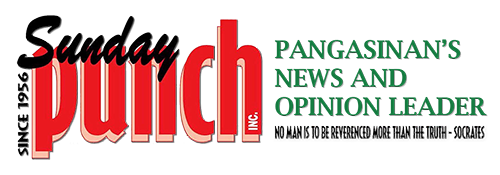Harvest Time
Goat production in the Ilocos enhanced
By Sosimo Ma. Pablico
GOAT RAISING has become a farmers’ habit of improving their livelihood and income, thanks to the efforts of the Department of Agriculture regional field unit.
Taking off from the experiences of the CASREN (Crop-Animal Systems Research Network) project with Pangasinan farmers, the DA-RFU 1 started to institutionalize and implement CASREN science in 2004. Overall, this regional goat production project has been enhanced through strong public and private partnerships.
Dr. Jovita M. Datuin, manager of the Ilocos Integrated Agriculture Research Center, said support from local officials, which was solicited in each project site before the start of the project, was an important factor that led to its success.
To get their support, the officials were invited to a dialogue and consultation in participatory planning and briefing. In each project site, Dr. Datuin and a handful of DA technologists met with local municipal and barangay officials as well as farmer leaders to identify goat production problems encountered by farmers in the past. From here, the DA technologists laid out the proposed solutions, including technology interventions.
Later, the provincial and municipal LGUs assigned their permanent representatives in the local working group. A training of trainers was conducted to enhance the capability of LGU technicians who were designated as focal persons in implementing this “learning by doing “ project.
Starting with six sites, the project expanded later to 37 sites. In each site, the farmers went through two-day training on goat production. Summing up what the farmers got from training program, Dr. Datuin said their negative perceptions on goat raising were changed positively as they started to consider goat production as a potential sustainable livelihood activity of rural families.
Actually, the farmers went through a season-long farmers’ livestock school (FLS) where they were allowed to discover and learn through hands-on experimentation and testing to enhance their attitudes, skills and knowledge on goat management. An FLS is conducted in 27 weeks. The FLS concept was used earlier in the CASREN project in three Pangasinan towns – Balungao, Sta. Barbara, and Calasiao.
In this particular DA project, 37 FLS were conducted with the participation of 920 farmers in the following locations:
Pangasinan – Balungao, Sta. Barbara, Alaminos City, Bani, Mangatarem, San Carlos City, Umingan, Urdaneta City, Mangaldan, Asingan, Basista, Sual, Alcala, Malasiqui, Bolinao, Mabini, Labrador, San Nicolas, Bugallon, and San Jacinto; La Union – Pugo, Tubao, Bagulin, Bauang, and Balaoan; Ilocos Sur – Vigan City, Candon City, Sinait, Tagudin, and Galimuyod; Ilocos Norte – Pinili and Laoag City.
The farmers were also brought to various backyard and commercial goat farms in Regions I and III and the Central Luzon State University to further build their capability. In their visits, the farmers became more familiar with the latest trends in goat production and personally appreciated the different technology options.
Amazingly, the project got considerable public support. At the provincial level, Pangasinan gave the highest financial support as follows: livestock upgrading, P1.74 million; small scale dairy goat farming, P1.675 million; veterinary medical mission, P1.5 million; breeding, P581,685; rotational buck every two years, 10 heads.
Ilocos Sur provided P1.621 million for goat upgrading in eight sites. From this amount, 98 breeder bucks were purchased and given as loans to farmer beneficiaries. In Ilocos Norte, the provincial government shelled out almost a million pesos – P933,000 – for goat upgrading and training in 17 sites. The La Union provincial government also provided a total of P125,000 for goat upgrading in Bacnotan, Tubao and Naguilian.
The full support of the LGUs was manifested by their willingness to shoulder some of the financial requirements and assign their agriculture technologists to the project. For the purchase of breeder bucks and does alone, which were loaned out to FLS graduates, the municipal and city governments spent a total of P3.75 million.
For each site, the other expenses shouldered by the LGUs were: training, P10,000 – P20,000; educational tours, P15,000 – P25,000; conduct of FLS, P5,000 -P10,000; drugs and biologics, P5,000 – P10,000; forage seeds, P2,000 – P5,000.
In a community action research project that complemented the goat development project, the Bureau of Agriculture Research also provided breeder loans in 19 barangays in: Alaminos City, Mangatarem, and Sta. Maria, Pangasinan; Tubao, La Union; Candon City, Ilocos Sur; Pinili, Ilocos Norte. A breeder loan consisted of eight upgraded breeder bucks per site to serve 200 does.
Furthermore, the Senate Committee on Agriculture provided an undisclosed amount for 12 expansion sites in La Union and Pangasinan with 129 beneficiaries.
The dole out system of livestock dispersal was totally avoided because of its history of continuing failures. After a year of project implementation, the farmer-adopters in all demo sites increased by 74 percent. All in all, 3,116 farmer-adopters in 37 goat raisers associations have been recorded.
On the part of the farmers, a sense of worth and pride in having a viable project of their own is a welcome development. Learning by doing works best, as shown by the farmers whenever they share their new knowledge to other farmers.
(Readers may reach columnist at spablico@yahoo.com. For past columns, click http://sundaypunch.prepys.com/archives/category/opinion/harvest-time/ For reactions to this column, click “Send MESSAGES, OPINIONS, COMMENTS” on default page.)
Share your Comments or Reactions
Powered by Facebook Comments






